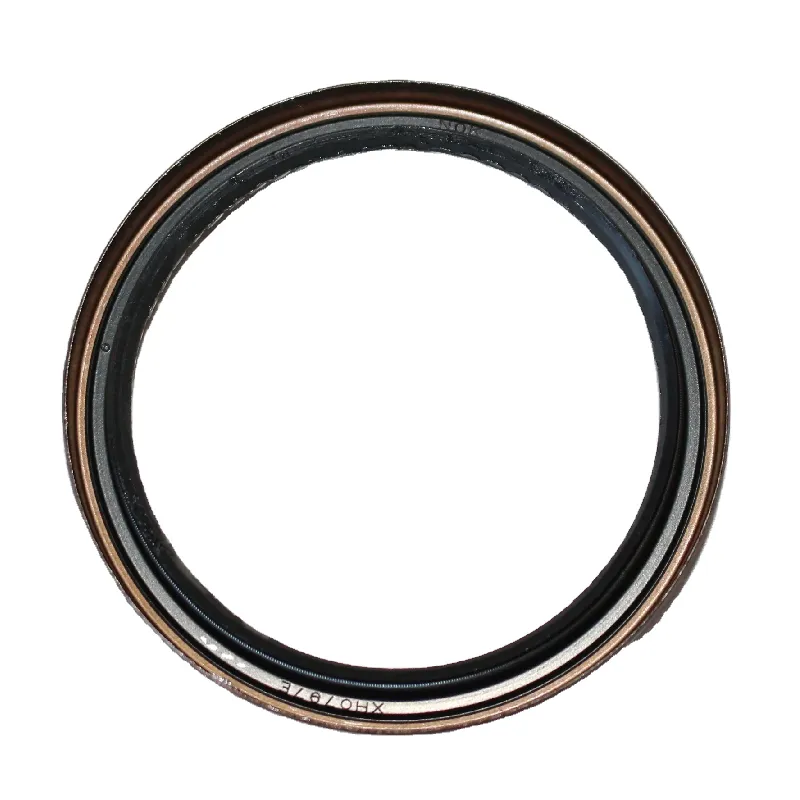Understanding the Benefits and Applications of Oil Seal Rubber in Industry
Understanding Oil Seal Rubber A Key Component in Mechanical Engineering
Oil seals, often referred to as oil seal rubber or simply oil seals, play a crucial role in mechanical engineering and various industrial applications. These essential components are designed to prevent the leakage of lubricants and fluids, ensuring that machinery operates efficiently and reliably. The importance of oil seal rubber cannot be overstated, as it contributes significantly to the longevity and performance of mechanical systems.
What are Oil Seals?
Oil seals are specialized seals that are typically made from elastic materials such as rubber or other synthetic materials. They are used to seal the interface between two parts of a machinery system, allowing for minimal leakage of lubricants while providing resistance to external contaminants. These seals are vital in rotating equipment, such as engines, gearboxes, and hydraulic systems, where they protect against the escape of oil and grease while keeping dirt and moisture at bay.
Composition and Materials
The most common materials used for oil seals include nitrile rubber (NBR), fluorocarbon rubber (FKM), silicone rubber (VMQ), and ethylene-propylene rubber (EPDM). Each material has unique properties that make it suitable for specific applications
- Nitrile Rubber (NBR) Known for its excellent resistance to oil and fuel, NBR is widely used in automotive applications and machinery that deal with petroleum-based fluids.
- Fluorocarbon Rubber (FKM) This high-performance material offers superior resistance to heat, chemicals, and oils. It is suited for extreme environments, making it popular in aerospace and chemical processing industries.
- Silicone Rubber (VMQ) With excellent temperature resistance and flexibility, silicone rubber is ideal for applications that involve high temperatures and extreme conditions. However, its resistance to oils is not as strong as NBR or FKM.
oil seal rubber

- Ethylene-Propylene Rubber (EPDM) EPDM is known for its weather, ozone, and aging resistance, making it suitable for outdoor applications and environments that require durability against environmental factors.
Applications of Oil Seals
Oil seals are found in various applications across numerous industries. In the automotive sector, they are critical in engines, transmissions, and axles. Industrial machinery and equipment utilize oil seals to maintain lubrication within gears and bearings, ensuring smooth operation and preventing premature wear.
Furthermore, oil seals are significant in hydraulics. They help maintain pressure while preventing the ingress of contaminants that could compromise the system's integrity. In the pharmaceutical and food industries, oil seals are designed with materials compliant with safety standards to ensure that products remain uncontaminated.
Maintenance and Replacement
Regular inspection and maintenance of oil seals are essential to prevent leaks that can lead to machinery failure and increased operational costs. A common cause of oil seal failure includes wear and tear from friction, exposure to harsh chemicals, or degraded rubber due to aging.
When replacing oil seals, it is crucial to select the correct size and material to match the specific application. Ensuring the proper installation of oil seals is equally important, as incorrect installation can lead to rapid seal failure or inadequate sealing.
Conclusion
Oil seal rubber is a fundamental component in the design and function of many mechanical systems. By preventing fluid leaks and blocking contaminants, oil seals ensure the reliability and efficiency of machinery across various industries. As technology continues to advance, the development of higher-performing materials will further enhance the capabilities of oil seals, enabling them to withstand even more demanding environments and applications. Understanding the importance of oil seal rubber is essential for engineers, maintenance personnel, and anyone involved in the operation of machinery. Investing in quality seals and maintaining them properly can lead to significant cost savings and improved operational efficiency.
-
Understanding Automotive Oil Seals: Essential Components for Engine and Shaft Protection
News Jul.30,2025
-
The Importance of Heavy Duty Seals in Industrial and Residential Applications
News Jul.30,2025
-
Exploring Industrial Oil Seals: From Felt Oil Seals to TTO and CFW Solutions
News Jul.30,2025
-
Essential Guide to Oil Seals: From Radial to Metal-Cased Seals for Industrial Reliability
News Jul.30,2025
-
Choosing the Right Oil Seals and Gaskets for Industrial and Automotive Applications
News Jul.30,2025
-
Cassette Seals: Durable Sealing Solutions for Harsh Environments
News Jul.30,2025
-
Understanding the Front Main Engine Seal: Purpose, Maintenance, and Installation
News Jul.29,2025
Products categories















